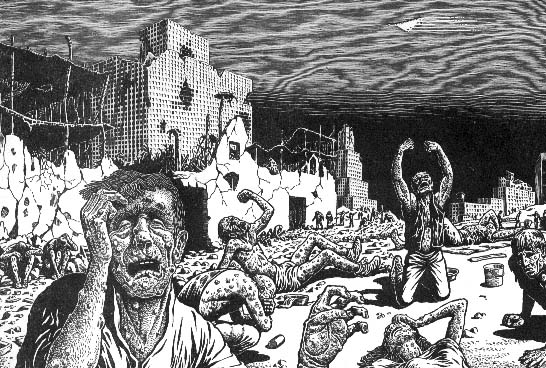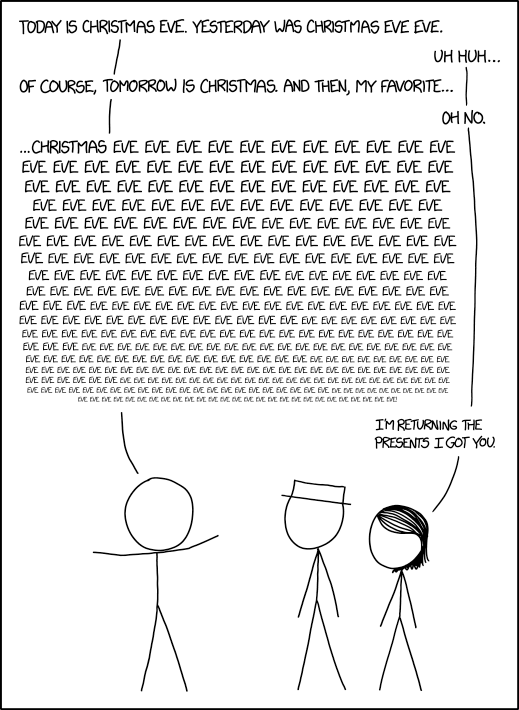5 dead as Eaton fire explodes to 10,600 acres — hundreds of structures destroyed or damaged
Evacuations ordered for all of La Canada Flintridge as blaze burns.
Before we get to the repost, here's a relevant excerpt from another post we did around the same time (emphasis added):
The three areas that have long been in heavy rotation with the California YIMBYs are, in order, San Francisco, Santa Monica and Venice Beach. Trailing the pack, the NYT has singled out La Cañada Flintridge and Matt Yglesias did a post on Beverly Hills. I'm not cherry-picking here, at least not consciously. With the possible exception of some gentrification battles in majority-minority neighborhoods like Boyle Heights, these are all the places that come to mind.
...
While the fixation on San Francisco is odd, the focus on Santa Monica and Venice is simply bizarre. Tiny (covering combined about twelve of LA County’s four thousand square miles), out-of-the-way, cut off by ocean to the west and mountains to the north. Scoring miserably on places readily accessible by public transit (the E line is terrible though proposed upgrades may improve this somewhat). A big chunk of SM is designated a wildland-urban interface. Venice, while safe from fires, is one of the few parts of LA low-lying enough to be threatened by rising sea levels.
La Cañada Flintridge, in addition to being tiny and isolated, is almost uniquely menaced by megafires with wild-land on both north and south.
Monday, August 23, 2021
It's not just we're going to have more fires; it's that we need more fires.
There is a tendency to treat global warming and Western megafires as one thing when they are two related but distinct crises requiring, in a sense, opposite approaches. With the climate crisis, we need to do what it takes to reverse the trends toward higher temperatures and ocean acidification. In the West, we actually need more but better fires.
As Elizabeth Weil explains in her Pulitzer-worthy Propublica piece (which we discussed earlier here). [emphasis added]
Yes, there’s been talk across the U.S. Forest Service and California state agencies about doing more prescribed burns and managed burns. The point of that “good fire” would be to create a black-and-green checkerboard across the state. The black burned parcels would then provide a series of dampers and dead ends to keep the fire intensity lower when flames spark in hot, dry conditions, as they did this past week. But we’ve had far too little “good fire,” as the Cassandras call it. Too little purposeful, healthy fire. Too few acres intentionally burned or corralled by certified “burn bosses” (yes, that’s the official term in the California Resources Code) to keep communities safe in weeks like this.
Academics believe that between 4.4 million and 11.8 million acres burned each year in prehistoric California. Between 1982 and 1998, California’s agency land managers burned, on average, about 30,000 acres a year. Between 1999 and 2017, that number dropped to an annual 13,000 acres. The state passed a few new laws in 2018 designed to facilitate more intentional burning. But few are optimistic this, alone, will lead to significant change. We live with a deathly backlog. In February 2020, Nature Sustainability published this terrifying conclusion: California would need to burn 20 million acres — an area about the size of Maine — to restabilize in terms of fire.
...
[Deputy fire chief of Yosemite National Park Mike] Beasley earned what he called his “red card,” or wildland firefighter qualification, in 1984. To him, California, today, resembles a rookie pyro Armageddon, its scorched battlefields studded with soldiers wielding fancy tools, executing foolhardy strategy. “Put the wet stuff on the red stuff,” Beasley summed up his assessment of the plan of attack by Cal Fire, the state’s behemoth “emergency response and resource protection” agency. Instead, Beasley believes, fire professionals should be considering ecology and picking their fights: letting fires that pose little risk burn through the stockpiles of fuels. Yet that’s not the mission. “They put fires out, full stop, end of story,” Beasley said of Cal Fire. “They like to keep it clean that way.”
Why is it so difficult to do the smart thing? People get in the way. From Marketplace.
Molly Wood: You spoke with all these experts who have been advocating for good fire for prescribed burns for decades. And nobody disagrees, right? You found that there is no scientific disagreement that this is the way to prevent megafires. So how come it never happens?
Elizabeth Weil: You know, that’s a really good question. I talked to a lot of scientists who have been talking about this, as you said, literally, for decades, and it’s been really painful to watch the West burn. It hasn’t been happening because people don’t like smoke. It hasn’t been happening, because of very well-intended environmental regulations like the Clean Air Act that make it harder to put particulate matter in the air from man-made causes. It hasn’t happened because of where we live. You don’t want to burn down people’s houses, obviously.
From this follows some equally obvious conclusions. If wildfires are both unavoidable and a natural part of the life-cycle of forests, if trying to suppress them only delays and compounds the problem and if people in the paths of these fires is one of, perhaps the major obstacle to the solution, then we need to have a serious debate about where we encourage (or even allow) new housing and development.
I don't want to get sidetracked by discussions about fire-adapted communities and wildland–urban interfaces. These are important topics but not the conversation stoppers people seem to think they are. The first is roughly equivalent to social distancing, smart preventative steps but hardly absolute protection. The second brings up images of of isolated mountain villages suggesting developed areas don't need to worry about this sort of thing. The reality of WUIs is more U than you might expect.
"The US Forest Service defines the wildland-urban interface qualitatively as a place where 'humans and their development meet or intermix with wildland fuel.' Communities that are within 0.5 miles (0.80 km) of the zone are included."
Here's a shot of L.A.
Lots of yellow here, particularly in areas noted for heated NIMBY/YIMBY debates, such as a big chunk of Santa Monica...
And pretty much all of La Cañada Flintridge.
Western megafires are an incredibly complex topic, but there are a couple of simple but important points we can make here.
1. We need more good fire, either through controlled burns or by simply choosing not to fight certain wildfires.
2. The more people who live in an area, the more difficult it is to pull the trigger on those good fires.





















.jpg)







